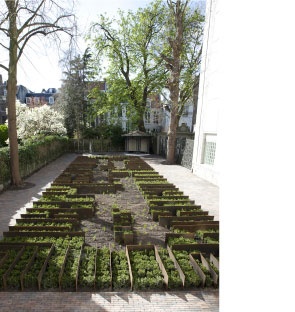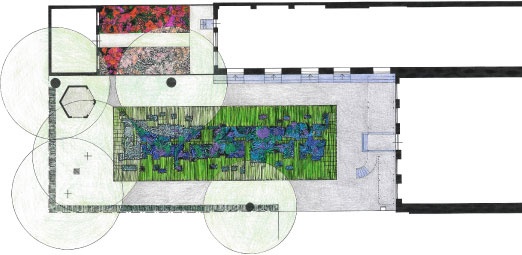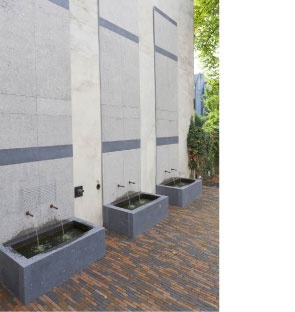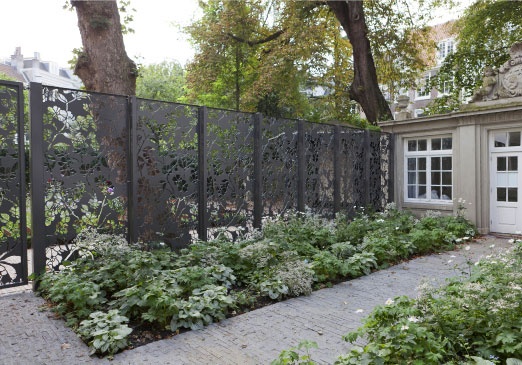

This grand mansion, towering in a bend of the Herengracht, is the ideal location for a museum about Amsterdam’s Canal Quarter. Behind it stretches a spacious garden, twelve metres wide and thirty metres deep, a characteristic yet rarely seen feature of such stately residences.
In the past, the garden was divided into two octagons, one behind the other, and much of it was gravelled. The only greenery consisted of a box bed with annuals and four Mop-head Acacias, aside from a few large trees along the edges, which have been maintained and supplemented with a Robinia and a Ginkgo.

The design takes its cue from the classical garden, in the manner of Vredeman de Vries, with a central flowerbed lined by box hedges, which used to be viewed, mostly, from the piano nobile.
At the same time, the design has been given a contemporary shape that maps the Canal Quarter’s peculiar plot pattern, which, under city regulations dating from the early 1600s, had to conform to strict standards.
It was this ‘Standard Block’ law, which remained in force until the 1960s, that ensured the survival of these lush oases in the heart of the city.

In this map, the canal houses and the garden houses are marked by box, while the gardens in between are filled with perennials, bulbs and corms, which together form a colourful carpet throughout the year. The boundaries between the plots are marked by vertical sheets of corten steel.

At the garden’s southern boundary, formed by a high wall of the adjoining premises, there are three basins, each containing two fountains.
To give these smallish elements the weight needed to match the dimensions of the garden and the façade, a slab of natural stone rises behind each of the three basins, mirroring the composition of the mansion’s piano nobile.

The adjoining premises (Herengracht 384), which have also been acquired as part of the museum, are to house an exhibition space and a cafeteria. The garden behind it, though small, has a splendid seventeenth-century garden house. The design has accordingly been kept as simple as possible, with a path leading down to the garden house flanked on both sides by a carpet of perennials and bulbs that throughout the year form a subdued pattern of green, white and blue hues.
In order to preserve the distinctive character of each garden, the boundary between them is marked by a transparent steel fence perforated with a cherry blossom pattern.
Client
Het Grachtenhuis Foundation
In collaboration with
De Kwaadsteniet B.V.
Francien van Kempen
Technician
Jacqueline van der Kloet
Planting plan
Photography
Emilio Troncoso Larrain